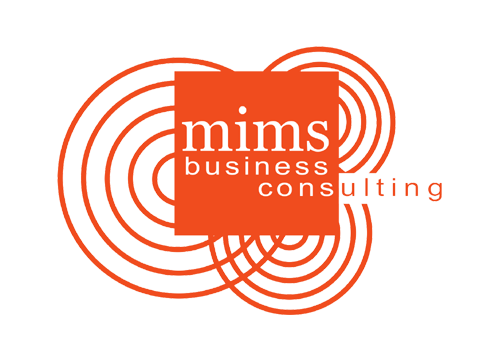This guide by our digital office specialist, Allison Gibson, provides best practices for law firms of all sizes and applies to most practice areas.
As law office organizing specialists, we’ve see a lot when it comes to case management and file management. One of the most common challenges can be putting your hand on a critical document immediately, when you need it, without wading through several files.
File Naming in the Digital Law Office
Most office now have a system for incoming documents: they’re scanned, logged, and dropped into the right digital file. Sometimes, however, file naming conventions aren’t met by the entire team or, guidance is needed on file naming best practices.
Step 1:
In advance, decide on the file naming convention that works best for your practice area.
Step 2:
Document the file naming rules and publish them along with your file structure requirements. Place a copy of your file naming rules in every digital new client template folder.
Step 3:
Use these Guidelines:
Include the date in a predetermined format (e.g., August 23, 2016 = 160823 or 2016-08-23) for chronological searching
Include relevant dates (e.g., the date executed, created, identified, received, signed, etc.)
Use abbreviations (e.g., EXE = Executed, DEPO = Deposition, DISCO = Discovery, etc.)
Identify documents, if stamped, e.g., FILED, ISSUED, RECEIVED, etc.
Include the matter number OR the case name (Johnson-v-Smith)
Don’t use special characters.
Avoid using spaces. But, if you do, the spaces should be consistent every time they’re used.
Here’s an example of how an incoming signed fee agreement would be named:
2021-08-23_M089456-B_FEE-AGREEMENT_EXE-by-Johnson.pdf
When filing the document digitally…
Tag the file to include the client’s last name, the type of document and even the matter number, if you wish.
Use descriptive names in subfolders. If necessary, include a very concise description of the file (i.e., for correspondence).
File Folder Structure and Organization
Organize folders by client name AND either the matter or case number, and the date the file was opened. Another method includes the lawyer’s name or a numeric indexing system, but this is not recommended here as it provides too much room for error and lacks descriptive text.
Folders: High Level Structure Example
ARCHIVES
CLIENT FILES
CLOSED CLIENT FILES
DECLINED
Client Files Structure - Subfolders
After the file structure is established, create an empty template of the folders which can be copied quickly for new cases.
Numbering:
Use double digit numbering for all of the primary folders so that they appear consistently in every tree. For example:
01-Admin
02-Attorney Notes and Research
03-Billing and Expenses
Inevitably, some matters will require a special folder that’s not a part of the template, so it needs to stand out. Numbering the special folder “00” for example, will put at the top of the directory and draw attention to it.
Document Index:
If you generate large volumes of documents for matters, consider incorporating a master file index spreadsheet into your subfolders. Although it will take a couple of minutes longer to log new documents into the spreadsheet, it will be an invaluable time saver when attempting to locate specific documents with specific information, especially when a matter has become complex and involves numerous documents. (I’ll provide a sample of the file index in a another post.)
File Tagging:
Consider adding tags to Word documents and PDFs. Tags are often read by practice / case management software when imported, and tags will give you more specific search terms.
Here’s our favorite example of client files structure from RocketMatter.com, which I’ve modified to include other key items, such as instructions and a file index.
CLIENT FILES
[client name]
[matter name]
1. ADMIN
File naming and structure guidelines - Place these digital file management instructions - or your own - inside this folder
Intake checklist
Opening file checklist
Contacts
File Index
Other examples: labels, etc.
2. ATTY NOTES AND RESEARCH
Handwritten notes from client consults
Research (statutes, cases, etc.)
3. BILLING AND EXPENSES
Capture invoices, receipts, etc. here.
4. CLIENT DOCS
Any documents obtained from the client, including electronic copies of original client documents.
5. CORRESPONDENCE
All letters, faxes, emails, phone transcriptions/logs
6. COSTS
All costs that may be recoverable by your client
7. DISCOVERY & EVIDENCE
One separate folder for each independently represented party(ies)
Within each party’s folder is the discovery propounded by that party and the responses thereto
Evidence
Depositions
There is a separate folder for each deposition, containing the notice/subpoena, correspondence regarding the depo, examination outlines, exhibits, etc.
8. DRAFTS
All draft documents remain in this folder until filed, submitted or sent
Final documents, whether created electronically, or printed and scanned, go elsewhere in this structure.
Mostly MS Word docs. Use file linking to attach to other relevant docs.
9. PLEADINGS
All documents that are filed with the court
Should all be in PDF format
Should not be any MS Word docs
10. RETAINER
Agreements
11. TRIAL PREP
Many items in this folder will be duplicates but will be easier to locate quickly by placing them together in a trial prep or trial folder.
Copies of all documents that may be used as evidence at trial, including charts and timelines
Subpoenas
Signed “on-call” agreements.
Court information – court directory, research about the court, special court rules and procedures, and judge’s preferences
Download Best Practices for Law Firm Digital File Management.
About the Author
Allison Gibson provides administrative consulting and focuses on leveraging software technology to streamline and automate workflows and procedures.




